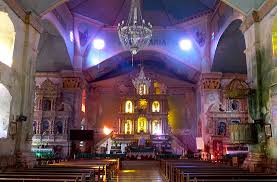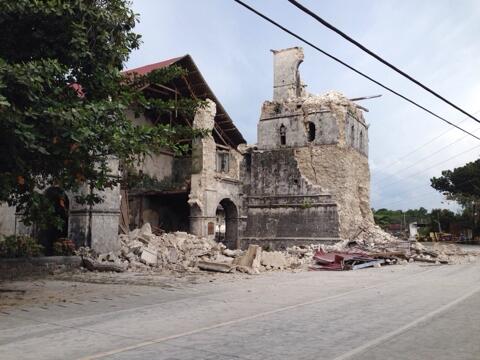The churches in Bohol are a distinct collection of Roman Catholic churches established during the early Spanish colonial period in the island-province of Bohol in the Philippines. Four of these churches - Baclayon, Loboc, Loon, and Maribojoc - are declared as National Cultural Treasures for its cultural, historical and architectural importance to the Filipino people
Baclayon


Shop Amazon - Top Gift IdeasBaclayon
About 6 kilometres (3.7 mi) east of Tagbilaran City is the town of Baclayon with its Church of Our Lady of the Immaculate Conception', one of the oldest churches established in the Philippines. The Jesuit mission founded in 1596 was the first in the province. The present church, completed in 1727, is one of the best preserved Jesuit-built churches in the region. In the 19th century, the Augustinian Recollects added a modern facade and a number of stone buildings that now surround the church.
The Baclayon Church is a well-preserved edifice that was declared a national historical treasure in 1995. Its antique décor and religious relics, some of which are on display in the church museum, date back to the 16th century.
Baclayon’s main road is also home to over 65 Spanish-Filipino ancestral homes – some of which were built as far back as 1853!
Cap your visit with a stop at the Aproniana Gift Shop, which carries everything from local delicacies to tarsier plush toys.
Nearby Pamilacan Island has made a name for itself with its move from destructive fishing practices to sustainable eco-tourism and marine preservation. Most people head here for dolphin-and-whale-watching tours, but the island also has accessible white sand beaches, excellent dive sites and even a centuries-old Spanish fort.
History
The mission of Baclayon was established by two Jesuit missionaries or doctrineros, Juan de Torres and Gabriel Sanchez, who came from Cebu and arrived in Bohol on November 17, 1596. Torres reported that he could not find a decent place to celebrate Mass, not even a serviceable table is available in the dwelling they stayed in. The Jesuit convinced the inhabitants to build a visita (chapel-of-ease), which they accomplished in no time. This was most likely a bamboo and thatch church.
Although Baclayon was the first seat of the Spanish Jesuit missionaries and served as the residencia or center of the Bohol missions where the superior resided, fear of Moromarauders soon forced them to move their headquarters more inland to Loboc. Baclayon was one of two towns that did not join the Diwata revolt (1621), remaining steadfast in the Christian faith.
Some 200 native forced laborers constructed the church from coral stones, which they took from the sea, cut into square blocks, and piled on to each other. They used bamboo to move and lift the stones in position, and used the white of a million eggs as mortar to bind them together. The current building was completed in 1727. The church has a dungeon, which was used to punish natives who violated the rules of the Roman Catholic Church. The church complex was fortified with a defensive wall built by the Jesuits.
Immaculada Concepcion de la Virgen Maria, Baclayon
The Jesuit-built Baclayon church is considered one of the oldest churches in the Philippines. It was built of coral stones, with the whites of countless eggs used to cement them together.
Its modern facade, though, was added in the 19th century by the Augustinian Recollects.
Attached to the church is a museum containing centuries-old religious and historic artifacts. The church was, for a long time, considered one of the best-preserved Jesuit churches in the region.
Immaculada Concepcion de la Virgen Maria, Baclayon
The Jesuit-built Baclayon church is considered one of the oldest churches in the Philippines. It was built of coral stones, with the whites of countless eggs used to cement them together.
Its modern facade, though, was added in the 19th century by the Augustinian Recollects.
Attached to the church is a museum containing centuries-old religious and historic artifacts. The church was, for a long time, considered one of the best-preserved Jesuit churches in the region.

http://en.wikipedia.org/wiki/Roman_Catholic_churches_in_Bohol#Alburquerque
http://philippinesfinest.ph/2014/05/02/bohol/

No comments:
Post a Comment